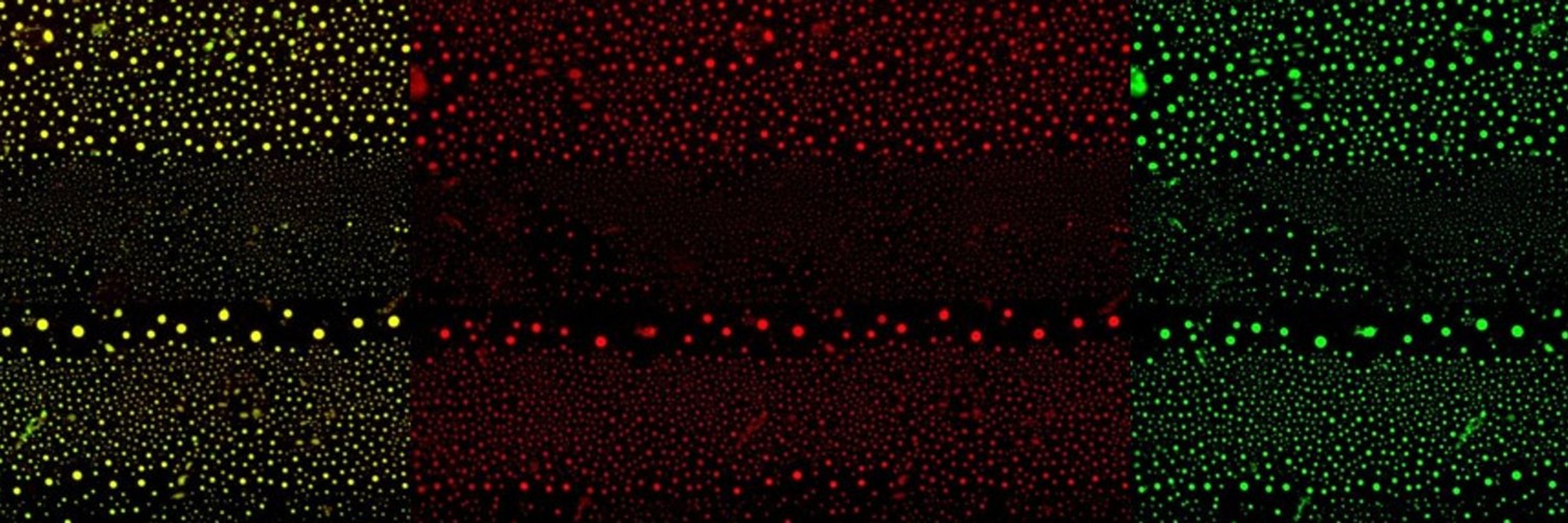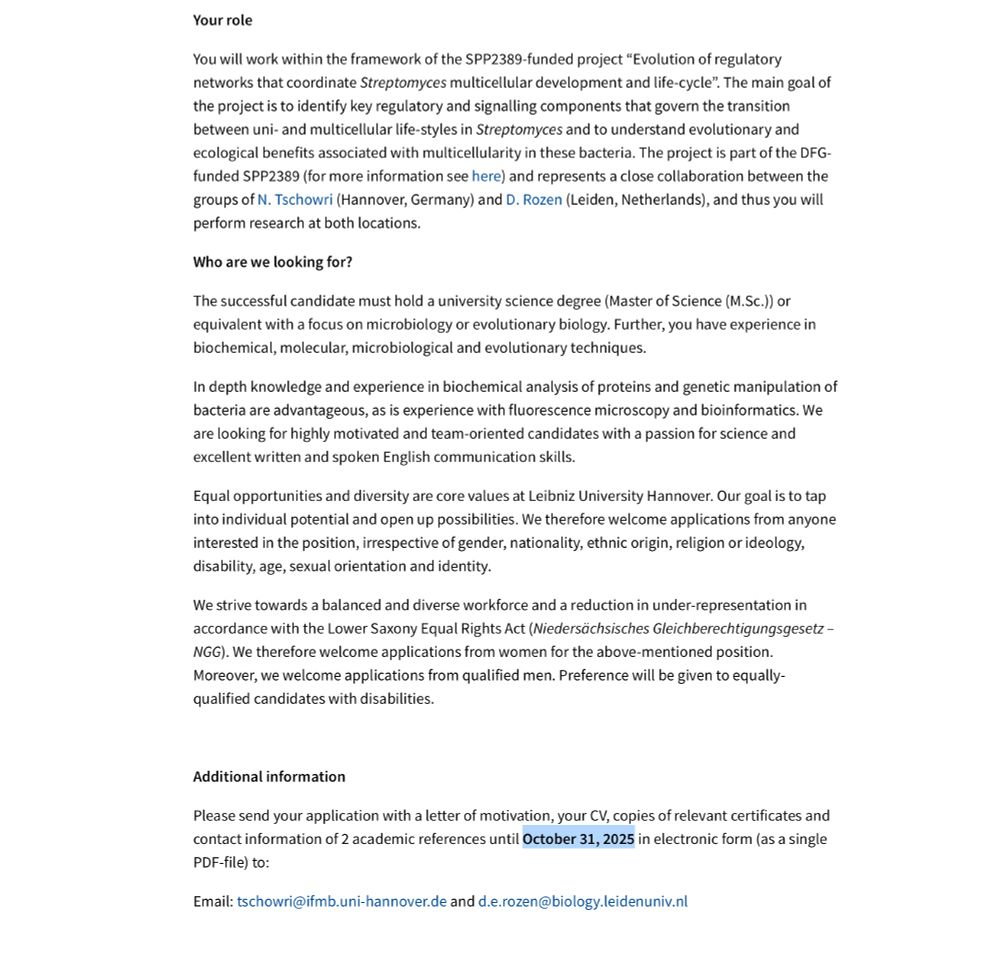


Work lead by the amazing Kevser Bilici!

Work lead by the amazing Kevser Bilici!
jobs.quadram.ac.uk/Details.asp?...
jobs.quadram.ac.uk/Details.asp?...
www.science.org/doi/10.1126/...

www.science.org/doi/10.1126/...
We're excited for users who might train new models, find phenotype/genotype mismatches, or any other use
EMBL-EBI’s new AMR portal brings together laboratory resistance data and bacterial genomes in one open platform.
#WAAW2025 #ActOnAMR
www.ebi.ac.uk/about/news/t...
🧬💻

We're excited for users who might train new models, find phenotype/genotype mismatches, or any other use
🗓️13-18 September 2026
📍Sant Feliu de Guixols, Spain
📝Program and registration info: meetings.embo.org/event/26-bac...
👩🔬Organised with co-chair @s-lab.bsky.social and ECR @coralietesseur.bsky.social
#MicroSky

🗓️13-18 September 2026
📍Sant Feliu de Guixols, Spain
📝Program and registration info: meetings.embo.org/event/26-bac...
👩🔬Organised with co-chair @s-lab.bsky.social and ECR @coralietesseur.bsky.social
#MicroSky
DAP resistance in enterococci pops up quickly. What’s been missing is why resistance-associated membrane changes look the way they do, and why the classic path of mutations is so predictable.
DAP resistance in enterococci pops up quickly. What’s been missing is why resistance-associated membrane changes look the way they do, and why the classic path of mutations is so predictable.
Bacteria can “remember” past environments through genetic & biochemical imprints helping them adapt and thrive! 🦠🧠
#MicroSky
www.nature.com/articles/s41...

A bile acid-bound structure of toxin TcdB revealed the mechanism of inhibition and guided the design of a synthetic bile acid that alleviated C. difficile infection in mice.
#MicroSky 🦠💊
www.nature.com/articles/s41...

A bile acid-bound structure of toxin TcdB revealed the mechanism of inhibition and guided the design of a synthetic bile acid that alleviated C. difficile infection in mice.
#MicroSky 🦠💊
www.nature.com/articles/s41...
'Monoclonal antibody anti-PBP2a from Methicillin-resistant Staphylococcus aureus (MRSA) binds PBP5 from Enterococcus faecium and confers protection in a murine model'
pubmed.ncbi.nlm.nih.gov/41238026/

'Monoclonal antibody anti-PBP2a from Methicillin-resistant Staphylococcus aureus (MRSA) binds PBP5 from Enterococcus faecium and confers protection in a murine model'
pubmed.ncbi.nlm.nih.gov/41238026/
Review article published in @natrevmicro.nature.com with @bupbuse.bsky.social, Andriko von Kügelgen and @vikramalva.bsky.social.
S-layers are everywhere!
www.nature.com/articles/s41...

Review article published in @natrevmicro.nature.com with @bupbuse.bsky.social, Andriko von Kügelgen and @vikramalva.bsky.social.
S-layers are everywhere!
www.nature.com/articles/s41...
pmc.ncbi.nlm.nih.gov/articles/PMC...
You can read our news and views here: www.pnas.org/doi/10.1073/...
pmc.ncbi.nlm.nih.gov/articles/PMC...
You can read our news and views here: www.pnas.org/doi/10.1073/...
www.biorxiv.org/content/10.1...

'Staphylococcus haemolyticus Population Genomics Provides Insights into Pathogenicity and Commensalism'
www.biorxiv.org/content/10.1...

'Staphylococcus haemolyticus Population Genomics Provides Insights into Pathogenicity and Commensalism'
www.biorxiv.org/content/10.1...
Klebs can evolve resistance to Colistin through mgrB mutation or by acquiring the mcr-1 gene. Both routes have similar fitness costs against a bacterial competitor, but mgrB mutations are associated with enhanced virulence.

Klebs can evolve resistance to Colistin through mgrB mutation or by acquiring the mcr-1 gene. Both routes have similar fitness costs against a bacterial competitor, but mgrB mutations are associated with enhanced virulence.
#MicroSky
🙏thx for pointing this out @microbingle.bsky.social
![The biosynthesis pathway of methylenomcyin A as discovered in this experiment. The new precursors, especially pre-methylenomycin C lactone, show increased potency against Gram-positive bacterial pathogen compared to the original methylenomycin A. [Greg Challis/University of Warwick]](https://cdn.bsky.app/img/feed_thumbnail/plain/did:plc:gudh3x7pgeh4uc6eee3zogtr/bafkreihr33z23marin4exrxfb3qg53urlzux22xrm3x6apaja5tdqqpvhu@jpeg)
#MicroSky
🙏thx for pointing this out @microbingle.bsky.social
🍽️ The impact of innovative food ingredients on the human gut microbiome and health with Dr Fred Warren @starchlab.bsky.social
📅Apply by 2 December
➡️ buff.ly/zaFaqGk

🍽️ The impact of innovative food ingredients on the human gut microbiome and health with Dr Fred Warren @starchlab.bsky.social
📅Apply by 2 December
➡️ buff.ly/zaFaqGk
deadline: October 31, 2025
www.uni-hannover.de/en/jobs/id/802

deadline: October 31, 2025
www.uni-hannover.de/en/jobs/id/802
my.corehr.com/pls/uoxrecru...
my.corehr.com/pls/uoxrecru...
1) MMG (my dept): fundamental research in med micro
2) Peds ID / I4Kids institute
3) Center for Vaccine Research
🔗 to all 3 w/info: www.linkedin.com/posts/vaughn...

1) MMG (my dept): fundamental research in med micro
2) Peds ID / I4Kids institute
3) Center for Vaccine Research
🔗 to all 3 w/info: www.linkedin.com/posts/vaughn...
www.science.org/doi/10.1126/...

www.science.org/doi/10.1126/...
#ApplEnvironMicrobiol from Jeff Barrick
journals.asm.org/doi/10.1128/...

#ApplEnvironMicrobiol from Jeff Barrick
journals.asm.org/doi/10.1128/...

